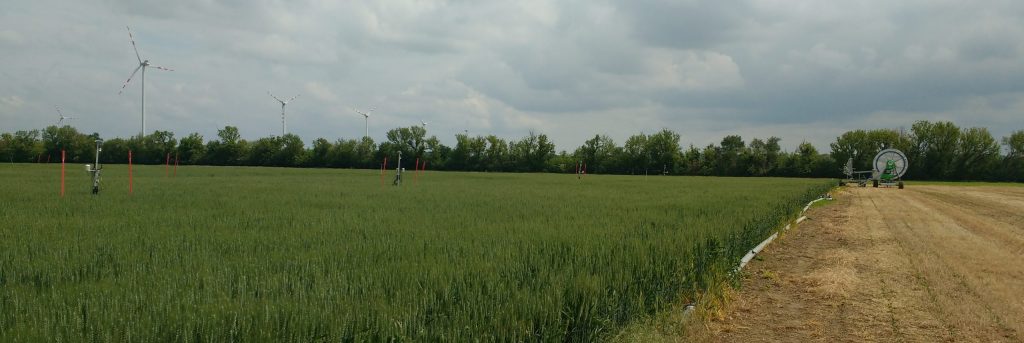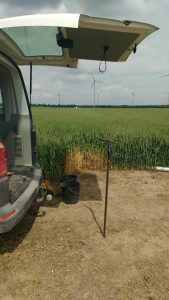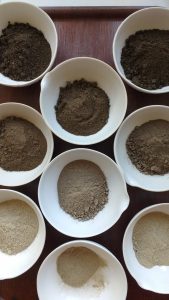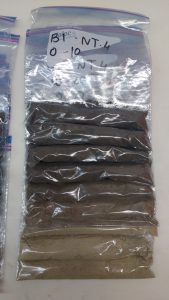This website uses cookies so that we can provide you with the best user experience possible. Cookie information is stored in your browser and performs functions such as recognising you when you return to our website and helping our team to understand which sections of the website you find most interesting and useful.
About
Tracer methods can provide valuable information on the water transport in soils. In WATERAGRI, the isotopic composition of precipitation water is used as an environmental tracer. The isotopic composition of oxygen and hydrogen isotope in precipitation water varies throughout the year, which depends on factors such as temperature and water vapor sources. These changes have a pronounced sinuosity with a minimum and maximum value in winter and summer in the climates covered by the project (i.e. Boreal, Continental and Pannonian).
This isotopic signal (δ18O and δ2H) can also be followed and observed in soil water in the vertical direction, as precipitation water pushes water from previous precipitation events downwards. Depending on the soil type, climatic characteristics and sampling timing, the seasonal distribution of isotopes might still be observable in vertical soil profiles. It is, therefore, possible to track the movement of water and quantify the water flux in the soil. Soil water flux below the root zone basically equals the potential groundwater recharge, which is essential for renewing groundwater resources. By means of a water balance, other inputs and outputs, such as evapotranspiration, can be estimated.
In order to use this simple method, a soil core is extracted and divided into 5 – 10 cm subsections. Soil samples are stored in sealable, inflatable and leak-tight bags, the isotopic composition of the water is analyzed, and the water content is determined. The isotopic signal of soil water can be compared with that of precipitation water to identify winter or summer peaks, considering the accumulated precipitation and isotopic composition. The volume of water per m² in that interval has to be related to the elapsed time (yr) to obtain the water flux or potential groundwater recharge. One of the main advantages of this method is the possibility to quantify water fluxes in fields that are difficult to access or have little data available by carrying out a single sampling campaign.
Developed by
Contact
MSc Alba Canet Marti
Dr. Christine Stumpp
Case Study
Where We Test Our Solution
This solution is tested at the:
- Obersiebenbrunn, Austrian case study site
- Municipality of Ruukki, Finland case study site
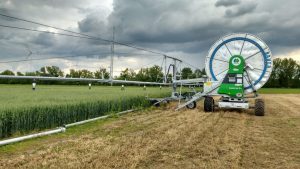
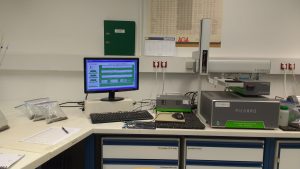
Solution Test Progress
- April 2020 – Laboratory experiment on the direct liquid-vapor equilibration method
- May 2020 – Sampling campaign at the Austrian case study site, Obersiebenbrunn
- June 2022 – Start of the simulation study
Publications
- Vadibeler, D., Stockinger, M.P., Wassenaar, L.I., Stumpp, C. Influence of equilibration time, soil texture, and saturation on the accuracy of porewater water isotope assays using the direct H2O(liquid)–H2O(vapor) equilibration method. 2022. Journal of Hydrology. Article in Journal.
- WATERAGRI Solution Test Findings. Project Deliverable.
- Water flux and hydrological processes quantification in agricultural fields under different tillage and irrigation systems using water stable isotopes. 2021. Poster published at 18th Stable Isotope Network Austria Meeting
- Tracing the attenuation of δ18O and δ2H in the unsaturated zone for different soil textures and biogeographic regions. 2022. Poster published at International Symposium on Managing Land and Water for Climate-Smart Agriculture , Vienna
- Water flux and hydrological processes quantification in agricultural fields under different tillage and irrigation systems using water stable isotopes. 2021. Presentation at the Conference. EGU GA 2021
Canet-Marti, A., Morales-Santos, A., Nolz, R., Langergraber, G., and Stumpp, C. 2021. Hydrological processes and water flux quantification in agricultural fields under different tillage and irrigation systems using water stable isotopes. EGU GA 2021. Presentation at the Conference
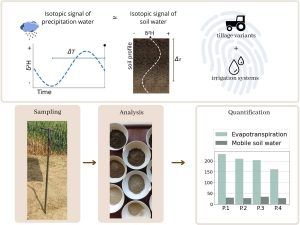
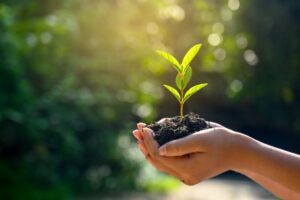

Laboratory experiment on the direct liquid-vapor equilibration method.

Farm visit with project partners (alchemia-nova, Martin Regelsberger) and members of the farmer’s school, owner of the experimental field.

Visit of partners to Obersiebenbrunn, Austrian case study site, field trip organized within the 5th General Assembly.

Simulation study to provide sampling recommendations depending on climatic conditions and soil type.
